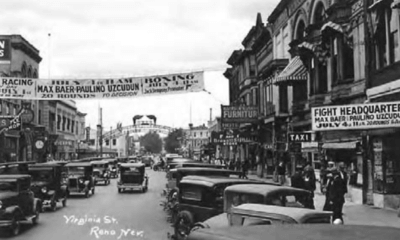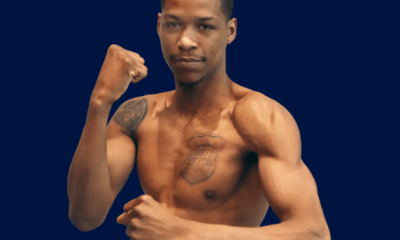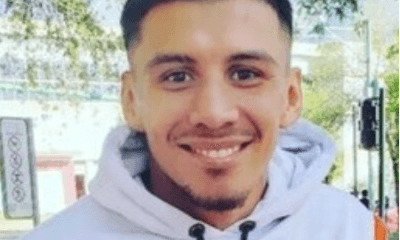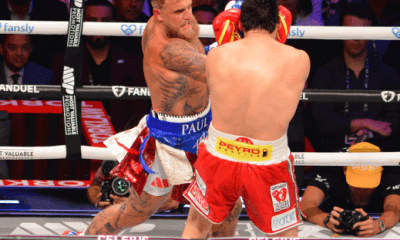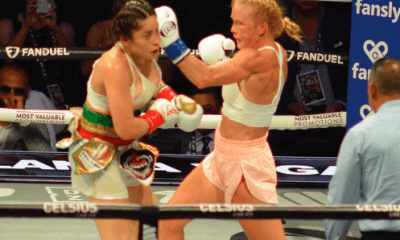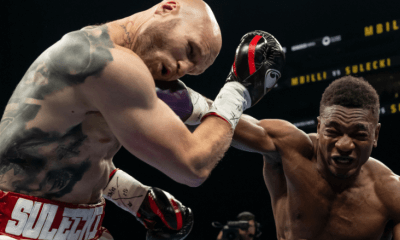Featured Articles
Avila Perspective, Chap. 234: Once-in-a-Generation Mega Fight: Tank Davis vs King Ry Garcia
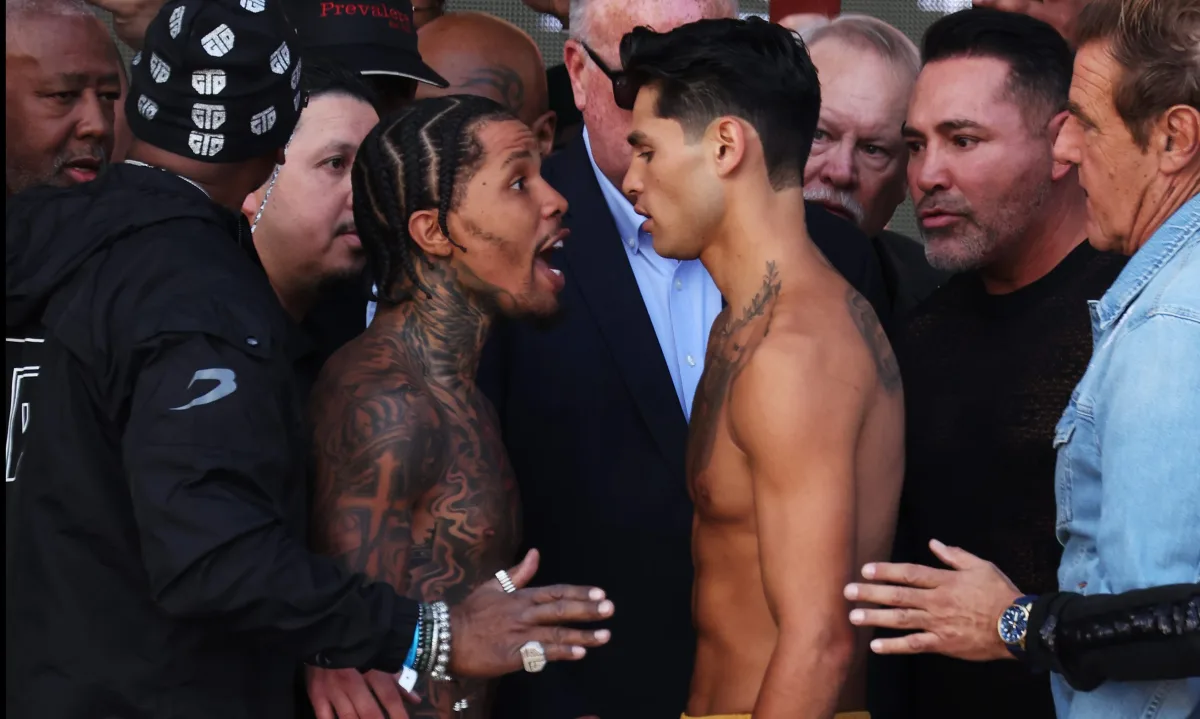
Avila Perspective, Chap. 234: Once-in-a-Generation Mega Fight: Tank Davis vs King Ry Garcia
LAS VEGAS-In my 38 years covering prizefighting I’m calloused at mere hype jobs and anxiously yearn for the true mega fights.
This is one of the diamonds.
Undefeated lightweights Gervonta “Tank” Davis (28-0, 26 KOs) and Ryan “King Ry” Garcia (23-0, 19 KOs) possess the key elements and demographics to attract worldwide audiences when they meet Saturday, April 22, at T-Mobile Arena in Las Vegas.
Showtime pay-per-view and DAZN pay-per-view will telecast and stream the TGB and Golden Boy Promotions card.
The very first mega fight I covered was Marvin Hagler versus Tommy Hearns and though it lasted a mere three rounds every second was a jewel. That was April 15, 1985 at Caesars Palace in Las Vegas.
Since that mega fight, others like Julio Cesar Chavez vs Meldrick Taylor, Evander Holyfield vs Riddick Bowe, Oscar De La Hoya vs Felix Trinidad, Manny Pacquiao vs Floyd Mayweather and Saul “Canelo” Alvarez vs Gennady Golovkin rank as some of the top thrillers. There have been others.
Tank Davis, 28, a short southpaw with eye-busting power, has proven to be more than a knockout artist, but a skilled boxer who can win despite suffering handicaps.
Against Mexico’s Isaac Cruz despite suffering an injury to his left hand,
Davis managed to use his legs and guile to outbox the Mexican’s constant attacks and win by unanimous decision. Though each round was very close the Baltimore fighter proved surprisingly adept at evading Cruz’s deadly blows.
It was a master class in boxing.
“It makes me excited,” said Davis at the weigh-in.
Davis has beaten taller, supposedly stronger fighters in most of his battles but seldom are they as quick as Garcia.
Garcia, 24, has a quick trigger left hook that has left many in ruins in his professional career that dates back to his pro debut as a 16-year-old in Mexico in 2016.
“All he’s got is that weak hook,” said Davis at the press conference in Las Vegas. “That’s all he’s relying on.”
Many forget that was the same claim critics mentioned in Oscar De La Hoya’s career. The fighter-turned-promoter carved out a Hall of Fame career with that deadly left hook that conquered six weight divisions. Only Pacquiao and Amanda Serrano have more divisions world titles.
The taller Garcia has a height and reach advantage, but will he be able to deal with the weight handicaps imposed by Team Davis? Or Tank’s smooth mobility and counter-punching?
Garcia made the 136-pound weight requirement at 135.5 pounds. Davis weighed 135.1.
It’s a definite concern.
A drained looking Garcia seemed healthy enough but that was on Thursday.
“I’m ready to do my job,” he said.
In reality, what makes this a mega fight is their ability to end a fight with one blow. Whoever can take the other’s punches will win.
“I just need one shot,” claims Garcia.
Las Vegas Undercard
Suddenly another super middleweight potential star has emerged in Cuba’s David Morrell.
The so-called WBA super middleweight titlist Morrell – I say so-called because Saul “Canelo” Alvarez is the true undisputed world champion – will be facing Brazil’s Yamaguchi Falcao in the semi-main event.
Morrell (8-0, 7 KOs) faces Falcao (24-1-1, 10 KOs) in a lefty versus lefty battle to see who takes a big step toward a showdown with either David Benavidez or Canelo Alvarez.
“I want to send a message to David Benavidez. I want him to know that I’m ready,” said Morrell.
A second super middleweight battle pits veteran Gabe Rosado (26-16-1, 15 Ks) against Bektemir “The Bully” Melikuziev (11-1, 9 KOs) in a rematch. One of Rosado’s 15 knockouts was “The Bully” two years ago.
“Whatever happened in the first fight already happened,” said Melikuziev. “I’m going to do my talking inside of the ring.”
Cardiff, Wales
Undefeated super featherweights clash as IBF titlist Joe Cordina (15-0, 9 KOs) defends against Shav Rakhimov (17-0-1, 14 KOs) on Saturday, April 22, in Wales. DAZN will stream the Matchroom Boxing card.
A female world title fight also features England’s Sandy Ryan (5-1) facing Canada’s Marie Pier Houle (8-0-1) for the vacant IBF welterweight belt on the Matchroom card.
Fights to Watch
Sat. DAZN 11 a.m. Joe Cordina (15-0) vs Shav Rakhimov (17-0-1); Sandy Ryan (5-1) vs Marie Pier Houle (8-0-1).
Sat. Showtime ppv, DAZN ppv 5 p.m. Gervonta Davis (28-0) vs Ryan Garcia (23-0); David Morrell (8-0) vs Yamaguchi Falcao (24-1-1); Bektemir Melikuziev (11-1) vs Gabe Rosado (26-16-1); Elijah Garcia (14-0) vs Kevin Salgado (15-1-1).
-

 Featured Articles3 weeks ago
Featured Articles3 weeks agoAvila Perspective, Chap. 330: Matchroom in New York plus the Latest on Canelo-Crawford
-

 Featured Articles2 weeks ago
Featured Articles2 weeks agoVito Mielnicki Jr Whitewashes Kamil Gardzielik Before the Home Folks in Newark
-
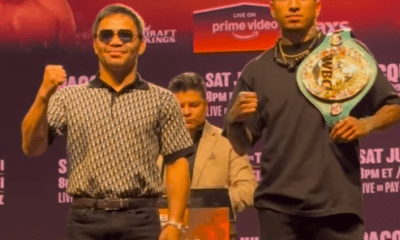
 Featured Articles4 weeks ago
Featured Articles4 weeks agoAvila Perspective, Chap 329: Pacquiao is Back, Fabio in England and More
-

 Featured Articles4 weeks ago
Featured Articles4 weeks agoOpetaia and Nakatani Crush Overmatched Foes, Capping Off a Wild Boxing Weekend
-

 Featured Articles3 weeks ago
Featured Articles3 weeks agoCatching Up with Clay Moyle Who Talks About His Massive Collection of Boxing Books
-

 Featured Articles4 weeks ago
Featured Articles4 weeks agoFabio Wardley Comes from Behind to KO Justis Huni
-

 Featured Articles1 week ago
Featured Articles1 week agoMore Medals for Hawaii’s Patricio Family at the USA Boxing Summer Festival
-
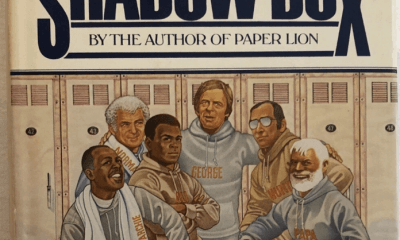
 Featured Articles4 weeks ago
Featured Articles4 weeks agoDelving into ‘Hoopla’ with Notes on Books by George Plimpton and Joyce Carol Oates

